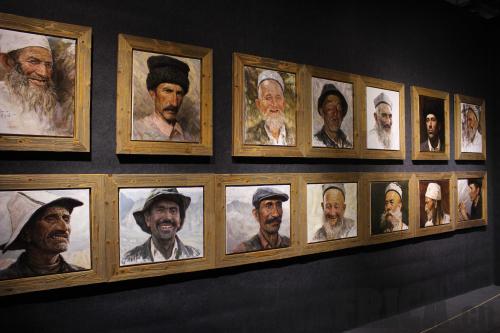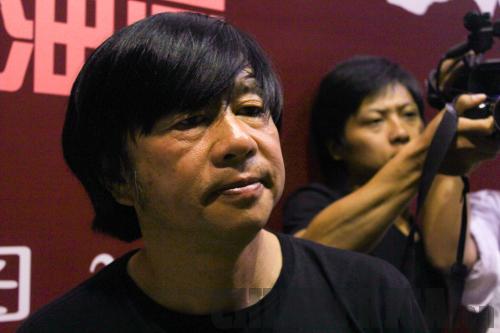|
 |
|
Li Zijian's paintings (ANDREA PARK) |
In a time when larger-than-life installations and mixed media projects rule the modern art scene, painter Li Zijian seems almost anachronistic with his realist paintings. Indeed, Li may have been better-suited for the Dutch Golden Age of painting, when Rembrandt Harmenszoon van Rijn and Johan Vermeer created masterpiece portraits that had the captivating, ephemeral quality about them that made them so timeless.
Certainly, Li's artwork is influenced by the Dutch Masters. His simple, honest portraits incorporate soft lines with beautiful lighting and haunting eye contact that stops viewers in their tracks. What sets Li's paintings apart from the classics, however, are his use of bright, highly saturated colors and more importantly, his subjects. A sprawling retrospective of his work is currently on display at the Xinjiang Contemporary Art Biennial in Urumqi.
Li's subjects come from all over the world, but the bulk of his hundreds of paintings depict the people of China and reflect the diversity within the nation. One series, Grandma, is composed of several oversized, close-up portraits of elderly women from different provinces in China; their shared silvery hair, weathered skin and soulful eyes make it almost difficult to tell that they are different women. Li's artworks cover many different minority groups in China; one particularly resonant series at the Biennial was of the region's Uygur people. But all of Li's paintings share a common theme that he likes to emphasize: "Love and Humanity."
Late bloomer
Li was born in 1954 in Shaoyang, Hunan Province and always had a passion for art. Though he experienced hardship during his teens, when his father became a political prisoner, he continued to pursue his passion for art despite the poverty his family experienced. After high school, Li enrolled in an art university in Guangzhou, but it wasn't until 1987 that he truly found his way and became a professional.
Li moved to the United States in 1988 to study art, and met the artist and Buddhist monk Master Hsing Yun in Los Angeles. Hsing, who is from Taiwan, saw promise in Li's artistic skills, and became a mentor to him, encouraging him to pursue his passion. Li created his debut series, which features portraits of his wife during and after pregnancy with their daughter. These portraits are striking, and show the depth of feeling Li has for his wife. The paintings have a classical feel to them with a soft focus and quiet beauty, and resemble European court portraits from the 17th century. The series ends with Li's wife playing with her child while she holds her belly - pregnant, again. "This shows the cycle of life," said Li.
Li's painting style has not wavered since the portraits of his wife. His paintings still adhere to the realistic, soft-edged formula with which he began. The oil paintings all capture a certain innocence and seem like pastorals on canvas. Even the paintings of urban subjects still have a naive, bucolic charm to them. It is this touching quality of Li's paintings that have garnered worldwide acclaim and the attention of people like Kofi Annan, who commissioned Li to paint his portrait.
|

|
|
Li Zijian (ANDREA PARK) |
|